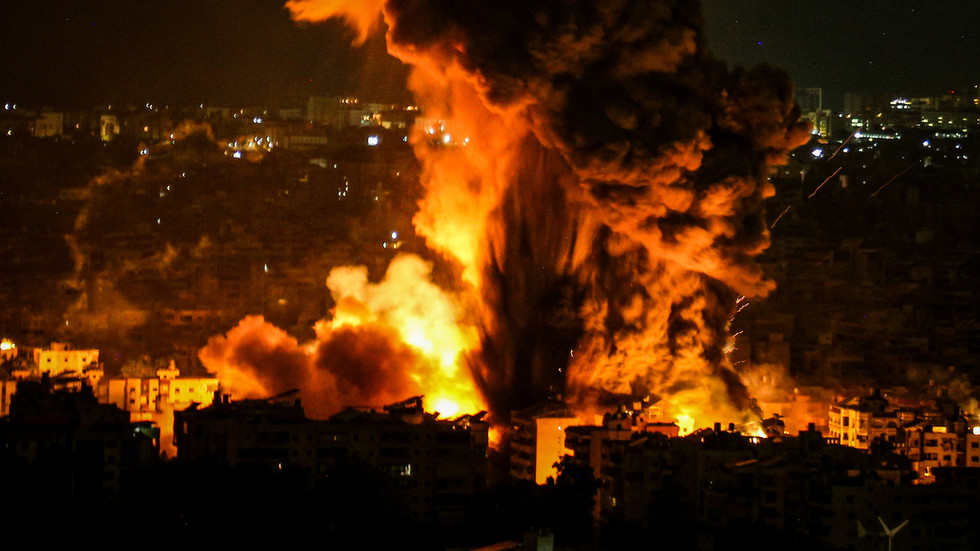In recent developments, the Israeli military has intensified its airstrikes in Lebanon, targeting the Hezbollah militant group, which is known for its pro-Palestinian stance. The Israeli Defense Forces (IDF) reported that their aircraft bombed an intelligence compound believed to be the headquarters of Hezbollah in Beirut. The strikes were aimed at dismantling key operational capabilities of Hezbollah, including command centers and various infrastructure used for terrorist activities. The military actions also extended to southern Lebanon and the Beqaa Valley, where significant targets included a weapons storage facility and another command center utilized by the group.
The airstrikes reportedly resulted in significant casualties, with the Lebanese Health Ministry confirming at least 11 fatalities and an additional 17 injuries caused by the bombings on a recent Sunday. This reflects the escalating nature of the conflict, as each side has ramped up military operations against the other. In conjunction with the airstrikes in Lebanon, the IDF disclosed that Israeli ground forces were also active across the border, engaging in operations in Gaza, specifically in the Jabaliya area, which adds a layer of complexity to the ongoing hostilities.
In another key incident, Israeli jets targeted the Al-Aqsa Hospital complex in Deir al-Balah, alleging it was being used by Hamas as a “command and control center.” This has prompted further controversy and condemnation, as hospitals and civilian infrastructure are often protected under international law. The implication of such a facility being involved in military operations raises questions about the ethics of warfare and the protection of non-combatants, underscoring how blurred lines have become in the conflict.
The response from Hezbollah has been swift, continuing to fire rockets into northern Israel, as evidenced by incidents reported over Haifa and the Upper Galilee area. There were accounts of projectiles landing in populated areas, resulting in injuries to at least ten individuals. Local media highlighted that at least eight people were transported to medical facilities for treatment following these attacks, which signifies the tangible impact of the ongoing conflict on civilian life in the region.
The ongoing exchanges of fire illustrate a deepening cycle of violence between Israel and Hezbollah, each retaliating to the other’s provocations. While the IDF continues its offensive operations, aiming to neutralize Hezbollah’s military capabilities and infrastructures, the commitment from Hezbollah to strike back reinforces its role as a significant player in the regional power dynamics. The intensity of these military confrontations raises concerns about civilian safety and the potential for escalation, which could draw in neighboring countries and further destabilize the region.
As the conflict persists, international observers remain vigilant, monitoring the developments closely. Calls for de-escalation and the protection of civilian lives are echoed within various forums, highlighting the urgent need for dialogue amidst the ongoing violence. The situation remains fluid, with the potential for further airstrikes and retaliatory actions, compelling both Israel and Hezbollah to navigate a complicated landscape of military engagement while ensuring that the humanitarian implications are not entirely overlooked.

